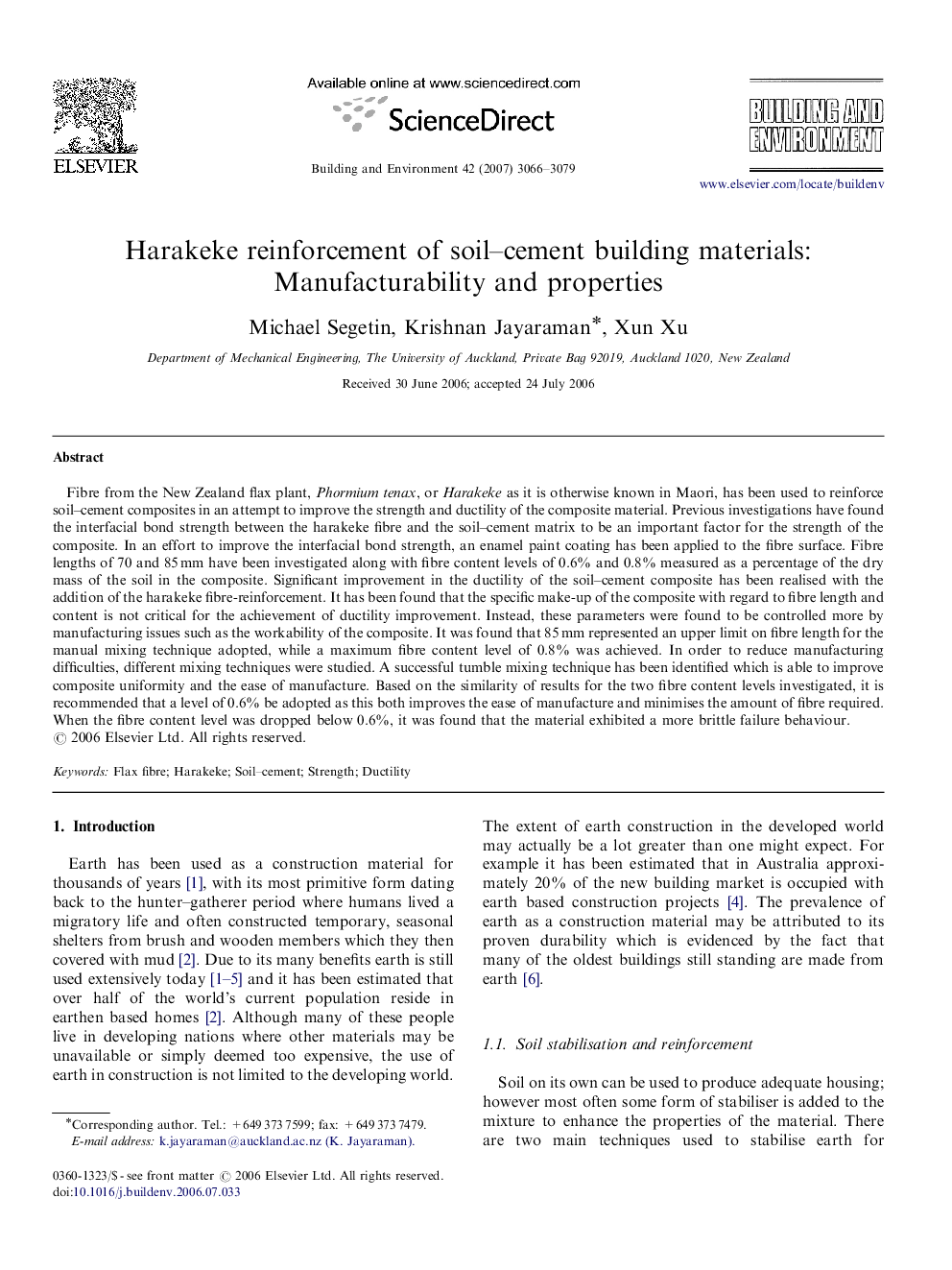| کد مقاله | کد نشریه | سال انتشار | مقاله انگلیسی | نسخه تمام متن |
|---|---|---|---|---|
| 249967 | 502644 | 2007 | 14 صفحه PDF | دانلود رایگان |

Fibre from the New Zealand flax plant, Phormium tenax, or Harakeke as it is otherwise known in Maori, has been used to reinforce soil–cement composites in an attempt to improve the strength and ductility of the composite material. Previous investigations have found the interfacial bond strength between the harakeke fibre and the soil–cement matrix to be an important factor for the strength of the composite. In an effort to improve the interfacial bond strength, an enamel paint coating has been applied to the fibre surface. Fibre lengths of 70 and 85 mm have been investigated along with fibre content levels of 0.6% and 0.8% measured as a percentage of the dry mass of the soil in the composite. Significant improvement in the ductility of the soil–cement composite has been realised with the addition of the harakeke fibre-reinforcement. It has been found that the specific make-up of the composite with regard to fibre length and content is not critical for the achievement of ductility improvement. Instead, these parameters were found to be controlled more by manufacturing issues such as the workability of the composite. It was found that 85 mm represented an upper limit on fibre length for the manual mixing technique adopted, while a maximum fibre content level of 0.8% was achieved. In order to reduce manufacturing difficulties, different mixing techniques were studied. A successful tumble mixing technique has been identified which is able to improve composite uniformity and the ease of manufacture. Based on the similarity of results for the two fibre content levels investigated, it is recommended that a level of 0.6% be adopted as this both improves the ease of manufacture and minimises the amount of fibre required. When the fibre content level was dropped below 0.6%, it was found that the material exhibited a more brittle failure behaviour.
Journal: Building and Environment - Volume 42, Issue 8, August 2007, Pages 3066–3079